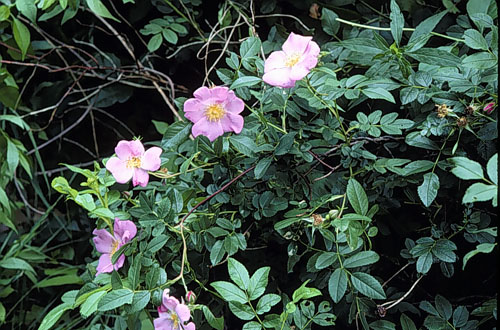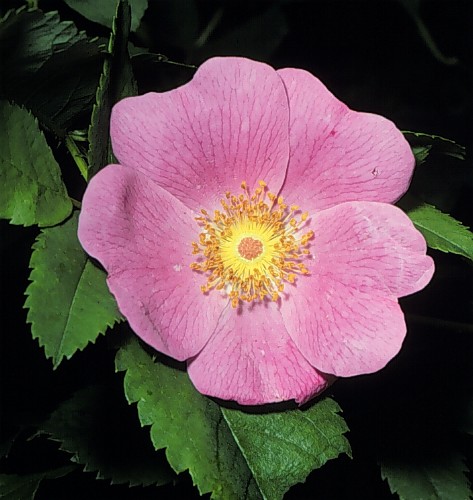Rosa virginiana
Virginia Rose
Rosaceae
ExpandHabitat
- native to eastern North America
- hardy to zone 3
Habit and Form
- a small, deciduous shrub
- 4' to 6' tall
- erect, upright stems
- medium texture
- fast growth rate
Summer Foliage
- alternate leaf arrangement
- odd, pinnately compound leaves
- 7 to 9 leaflets
- 1" to 2.5" long
- serrate leaf margins
- serrations point forward
- lustrous dark green leaf color
Autumn Foliage
- purplish to red fall color
Flowers
- single, pink flowers
- 2" to 2.5" across
- fragrant
- blooms in June
Fruit
- red hip
- 0.5" across
- persist
- can be showy
- matures in August
Bark
- reddish canes
- paired prickles
Culture
- full sun
- easy to transplant and grow
- prefers well-drained, acidic soil
- pH adaptable
- salt tolerant
- prune tolerant
Landscape Use
- hedge
- for flowering effect
- salt tolerance
- banks
- sandy soils
- specimen
- for seaside planting
Liabilities
- blackspot
- powdery mildew
- aphids
- thrips
- mites
- suckers
ID Features
- paired prickles
- alternate leaf arrangement
- red hip
Propagation
- by seed
- by cuttings
Cultivars/Varieties
- none

